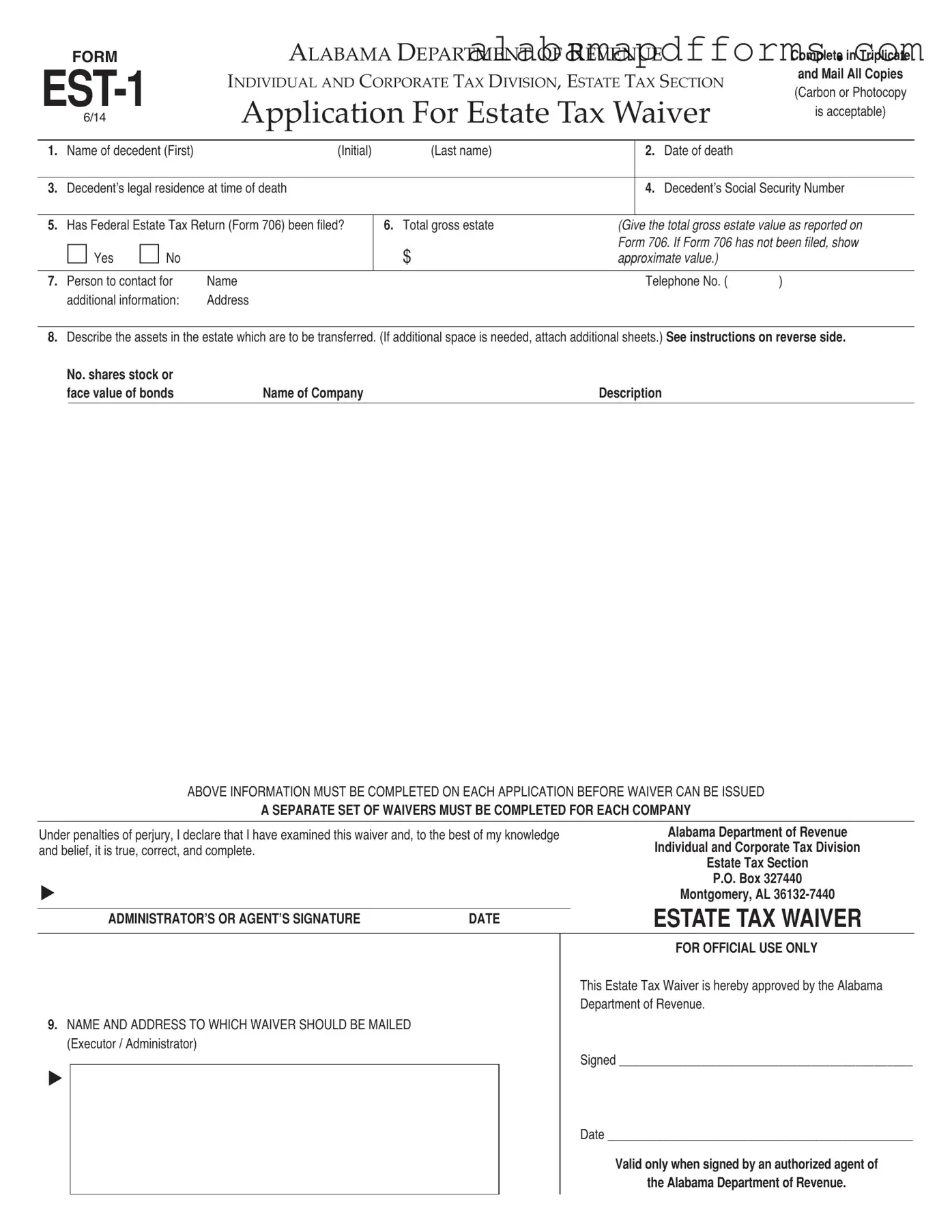The Alabama Form EST-1 is similar to the IRS Form 706, which is the United States Estate (and Generation-Skipping Transfer) Tax Return. Both documents serve the purpose of reporting the value of a decedent's estate for tax purposes. Form 706 is required for federal estate tax calculations and must be filed if the gross estate exceeds a certain threshold. Like the EST-1, it requires detailed information about the decedent, including their date of death, legal residence, and the value of the estate. The information collected in both forms is crucial for determining any tax liabilities and ensuring compliance with tax laws.
Another document comparable to the Alabama EST-1 is the IRS Form 706-NA, the United States Estate (and Generation-Skipping Transfer) Tax Return for Nonresident Aliens. This form is used by nonresident aliens to report their estate tax obligations in the U.S. Similar to the EST-1, it gathers information about the decedent's assets and liabilities at the time of death. Both forms require a detailed breakdown of the estate’s value and assets, ensuring that the appropriate taxes are assessed based on the estate's worth.
The Alabama Form EST-1 also shares similarities with the state-specific estate tax forms used in other states, such as the New York State Estate Tax Return (Form ET-706). Like the EST-1, the New York form must be completed to determine the estate tax owed to the state. Both forms require information about the decedent, including their assets, liabilities, and other pertinent details. The aim of these documents is to facilitate the proper assessment of estate taxes at the state level, ensuring compliance with local laws.
For individuals dealing with vehicle transactions, understanding the significance of a comprehensive Motor Vehicle Bill of Sale document is vital. This form not only acts as proof of sale but also details essential information such as the vehicle's identification and sale terms. For further guidance, you can refer to this necessary Motor Vehicle Bill of Sale document.
Additionally, the EST-1 is akin to the California Estate Tax Return, which, although currently not in effect, outlines the requirements for reporting an estate's value for tax purposes. Both forms emphasize the importance of accurately reporting the gross estate and provide a framework for the executor or administrator to disclose relevant financial information. The California form would have required similar details, such as the decedent's legal residence and asset descriptions, mirroring the structure of the Alabama EST-1.
Lastly, the Alabama EST-1 is similar to the Uniform Probate Code (UPC) forms used in various states for probate proceedings. These forms, while primarily focused on the administration of the estate, often require information about the decedent's assets and debts. They help ensure that the estate is settled according to state laws. Both the EST-1 and UPC forms facilitate the process of transferring assets and settling debts, highlighting the importance of accurate reporting in estate management.


